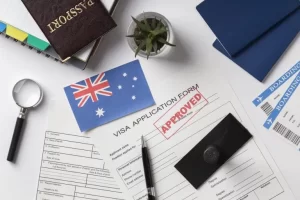Introduction
Are you worried about whether your international hire will stay with your company for the long haul? You’re not alone. Many business owners and HR managers face this concern, especially when investing considerable time and resources into recruiting international talent. You might feel uncertain because you’ve never hired an international worker before, or perhaps you’ve heard stories about employees leaving shortly after starting. The last thing you want is to invest in training and integrating a new employee only to see them leave for another opportunity, possibly in the booming mining sector.
As an HR professional with extensive experience in managing and retaining international hires, I understand your concerns. The good news is that there are practical strategies and supportive measures you can implement to ensure your international employee remains engaged and committed to your company.
If you offer a great onboarding experience and a positive workplace culture, you are going to build a lasting relationship with your candidate. There are a few things we always tell clients when asked about retention:
- The SOLVED model means candidates are filtered at every stage of the process, meaning we are only working with candidates who are looking for permanent residency or somewhere to settle long term.
- Our candidates trust us to place them with reputable employers to whom they are well matched.
- They have also paid for their visa fees and charges, so they have a lot of skin in the game.
- There is significant risk for them in moving employers – we don’t continue working with candidates who leave an employer we’ve placed them with.
In this article, you will learn about the key factors influencing the retention of international workers and discover actionable steps to create a work environment that encourages them to stay long-term. By the end of this article, you’ll feel more confident in your ability to retain international talent and see a better return on your recruitment investment.
Here’s what we will cover:
- Creating a supportive onboarding process.
- TRT Pathway
- Navigating legal and logistical considerations.
Creating a Supportive Onboarding Process
A well-structured onboarding process is essential to help your international employees settle in quickly and feel valued from day one. Here are some key steps to ensure a smooth transition for your international hires:
- Pre-Arrival Preparation
Before your international employee arrives, provide them with detailed information about their new role, company policies, and what to expect in their new country. This can include:
- An introduction to the company culture and team members.
- Practical information about living in the new country, such as housing options, local transportation, and key cultural norms.
- An organisation chart with pictures of key stakeholders.
- First Day Essentials
Make the first day welcoming and productive by:
- Assigning a dedicated onboarding buddy or mentor to guide them through the initial weeks.
- Providing a comprehensive orientation program that covers company policies, workflows, and tools.
- Making sure they know who their manager is.
- Mentorship and Buddy Systems
Assigning a mentor or buddy to your international hire can significantly ease their transition. This person can:
- Offer guidance on cultural nuances and workplace norms.
- Provide a friendly face and initial social connection within the company.
- Assist with any questions or concerns during the first few months.
- Regular Check-Ins
Schedule regular check-ins with your international hires to address any concerns and provide ongoing support. During these check-ins:
- Discuss their progress and any challenges they are facing.
- Provide constructive feedback and acknowledge their contributions.
- Encourage them to share their experiences and suggestions for improvement.
- Feedback Mechanisms
Establish feedback mechanisms to continuously improve the onboarding process. Encourage your international employees to share their experiences and suggestions for:
- Enhancing the onboarding experience.
- Addressing any gaps or challenges they encountered.
- Providing insights on how the company can better support future international hires.
By implementing these steps, you can ensure your international employees feel supported and valued from the beginning, setting the foundation for long-term retention.
Understanding the Temporary Residence Transition (TRT) Pathway
The Temporary Residence Transition (TRT) pathway is a critical aspect of Australia’s skilled migration programme. It provides a clear route for temporary skilled workers on a 482 visa to transition to permanent residency, offering both stability and long-term career opportunities. Here’s how understanding and leveraging the TRT pathway can help ensure your international candidate stays with your company:
- What is the TRT Pathway?
The TRT pathway allows 482 visa holders to apply for permanent residency through the Employer Nomination Scheme (ENS) subclass 186 visa. This pathway is designed for skilled workers who have been employed in Australia with the same employer for at least two years. It’s this opportunity for Permanent Residency after two years that vastly reduces the likelihood of your international employee leaving your employment. If they do then that two year clock re-sets to zero with their new employer.
- Benefits of the TRT Pathway for Employers
Supporting your international employees through the TRT pathway offers several advantages:
- Employee Retention: Providing a clear pathway to permanent residency increases job satisfaction and loyalty, as employees see a stable future with your company.
- Talent Retention: International hires are more likely to stay with a company that invests in their long-term career prospects.
- Reduced Turnover Costs: Lower turnover rates mean reduced recruitment and training costs, as well as maintaining continuity within your teams.
- Eligibility Requirements
For your employee to be eligible for the TRT pathway, they must meet the following criteria:
- 482 Visa Holder: They must hold a valid 482 visa.
- Work Duration: They need to have worked for your company for at least two years in the nominated occupation.
- Role Consistency: The role they are nominated for under the ENS 186 visa must be the same as, or closely related to, their role on the 482 visa.
- Skill and English Proficiency: They must meet the required skill level and English language proficiency for the ENS 186 visa.
- Employer Responsibilities
As an employer, you play a vital role in supporting your employee’s application for permanent residency through the TRT pathway. Your responsibilities include:
- Sponsorship: You need to nominate the employee for the ENS 186 visa.
- Role Commitment: Ensure that the nominated position is ongoing and meets the required standards.
- Support and Documentation: Provide necessary documentation and support throughout the application process.
- Advantages for International Employees
The TRT pathway provides numerous benefits for your international employees, including:
- Job Security: Achieving permanent residency offers greater job security and stability.
- Career Growth: Permanent residency opens up more opportunities for career advancement and professional development.
- Family Stability: Employees can secure a stable future for their families, which can be a significant motivator to remain with your company.
- Access to Benefits: Permanent residents have access to more public services and benefits, enhancing their quality of life in Australia.
Case Study: Catering HQ
Catering HQ, a company that emerged from the COVID-19 lockdowns with a severe shortage of skilled trades, successfully utilised the TRT pathway. In July 2022, they welcomed their first 482 visa candidates. These employees are now applying for the ENS 186 visa after completing two years with the company. The TRT pathway has allowed Catering HQ to retain skilled workers and build a stable, experienced team, proving the effectiveness of this visa route in securing long-term international talent.
Moving Forward with Confidence
By focusing on creating a supportive onboarding process and leveraging the Temporary Residence Transition (TRT) pathway, you can significantly enhance the retention of your international hires. These strategies not only foster a positive and inclusive work environment but also provide a clear and stable career progression for your employees. Ensuring that your international workers feel valued, supported, and secure in their roles is key to building a committed and loyal workforce.
By following our ultimate checklist, business owners and leaders can effectively navigate the process of hiring internationally.








